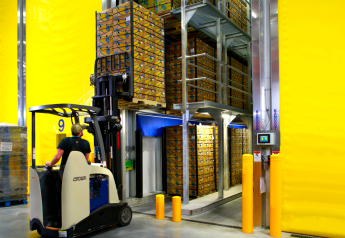UPDATED: Trump administration releases new H-2A wage method

UPDATED: Stabilizing labor costs and adding more predictability, the Department of Labor’s H-2A wage rule is winning industry support.
U.S. Agriculture Secretary Sonny Perdue praised the final rule, which will become effective 45 days after publication in the Federal Register.
In a statement, the Florida Fruit & Vegetable Association commends the U.S. Department of Labor for extending the 2020 Adverse Effect Wage Rate through 2022. “We applaud the agency for recognizing that the USDA’s annual Farm Labor Survey was not the appropriate tool to determine wages for workers in the H-2A program,” the group said. “This change more closely matches market wage rates while not lowering wages for agricultural workers.”
FFVA said the measure holds wages stable during the transition period and provides “much-needed predictability” for agriculture employers who use the H-2A program.
The new method announced by the DOL should produce a more stable wage for the H-2A program, according to Michael Marsh, president and CEO of the National Council of Agricultural Employers. However, he said the rule could be subject to review if Democratic candidate Joe Biden wins the White House, he said.
“We applaud the Administration for taking this preliminary step toward AEWR rationality,” Dave Puglia, president and CEO of Western Growers, said in a news release. “However, rules are subject to the whims of the administration in office, and cannot address every need of the farm workforce, which is why we will continue to work toward a more permanent and complete legislative solution that creates a more workable H-2A program and provides a pathway to legalization for existing agricultural workers.”
Promise kept
Perdue said in a news release that the rule delivers on President Trump’s promise to stabilize farm labor costs and reform the H-2A wage rate.
“This rule shows once again President Trump’s commitment to America’s farmers by delivering lower costs when they need it the most,” Perdue said in the release. “Over the past several years farm wages have increased at a higher pace than other industries, which is why this DOL rule could not come at a better time. This is an example of good government that will ensure greater stability for farmers and help them make long term business decisions rather than facing uncertainty year after year.”
The Department of Labor’s final rule updates the methodology for determining the annual Adverse Effect Wage Rates in the H-2A visa program, The new rule improves the consistency of the AEWRs, provides stronger protections for workers, and establishes better stability and predictability for employers in complying with their wage obligations.
For the vast majority of agricultural jobs, the release said the rule stabilizes the wage rate through the calendar year 2022 by using the average hourly wages for field and livestock workers (combined), as reported by the U.S. Department of Agriculture’s Farm Labor Survey published in November 2019, as the AEWRs for field and livestock worker occupations. Beginning in 2023, and annually thereafter, the release said the Department of Labor will adjust these AEWRs by the percentage change in the Bureau of Labor Statistics’ (BLS) Employment Cost Index for wages and salaries for the preceding 12-month period.
For all other agricultural jobs, DOL will set and annually adjust the AEWRs using the average hourly wages for the occupational classification reported by the BLS Occupational Employment Statistics (OES) Survey program. These agricultural jobs are often supervisory or higher skilled/uniquely skilled, such as construction jobs, which pay higher wages than typical farming occupations, according to the release.
The USDA said the changes implemented in this rule also address stakeholder concerns about the potential for “significant and unpredictable” wage changes from year-to-year associated with the Department of Labor’s prior method.
The release said the Department of Labor intends to issue a second final rule to finalize the remainder of the July 29, 2019, proposed rule that will govern other aspects of the certification of agricultural labor or services performed by H-2A workers, and enforcement of the contractual obligations applicable to employers of such nonimmigrant workers.
UFW wins prelminary injunction against USDA







